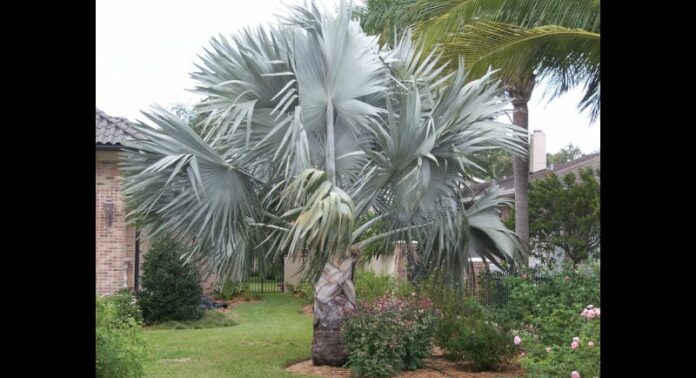In our last foray into the subject of palms, I referred to the coconut and its more elegant cousin, the foxtail palm or wodyetia. Like other species such as royal, Bismarck, date and oil palms, they all possess a single trunk crowned with massive fronds. It’s how the layman thinks of palms.
However, many species are multi-stemmed; they do not possess this characteristic outline. One of the most distinctive of these clump palms is the so-called lipstick or sealing wax palm.
Cyrtostachys has stems that sprout directly from the ground and both these crown shafts and the leaf sheaths above are a surprising and attractive shade of red. Hence the name. Slender, ramrod straight stems – and there may be 20 or more – grow close together in a dense clump. As a consequence, this beautiful but slow-growing palm is often relegated to a large container, though it is better suited to open ground where it will attain a much larger size – up to 10 metres in ideal conditions.
In the wild, it does best in marshy ground. As with the lady palm, it will not survive droughts and even a short period without water will lead to die-back.
Another multi-stemmed species is the golden cane palm, perhaps the variety most frequently used as a garden presence in Southeast Asia. More open in habit than the lipstick palm, its stems grow into bamboo-like canes up to six centimetres in diameter. The feathery foliage, which sprouts from near the top of each stem, is light green, but in full sun can turn an attractive golden yellow.
Extremely hardy, Dypsis lutescens is also cultivated as a container plant where, in an open location, it will retain its golden fronds. One word of warning: Planted in a border, it can grow to a considerable size – maybe five metres – and become ‘leggy’ and less attractive in the process.
Ideal for the larger garden is the Bismarck palm A native of Madagascar where it is ironically in serious decline, Bismarckia nobilis lives up to its name – an ornamental species which provides a talking point wherever it is encountered.
The talking point? Its amazing glaucous fronds up to three metres across. Their matt, grey-green appearance gives the tree a truly exotic character. Instead of appearing at the crown, these fronds appear at the end of massive stalks that grow out from the thick trunk most of the way up the bole. My specimen also provided a bonus in the form of huge clusters of marble-sized black fruits like small grapes. Though inedible, their skin can be stripped off and the seeds planted in deep soil. Germination takes three months.
As this column has often pointed out, the language of gardening is full of anomalies. Take the so-called traveller’s palm. It is not, strictly speaking, a palm at all but a banana. Nonetheless, the popular name survives.
More important than the wayward name is its value to us as gardeners, especially when planted in a row or along a wall, where it can display its arresting looks. The majestic beauty of ravenala lies in its remarkably symmetrical shape, a narrow fan which allows it to preside over borders without overwhelming smaller plants; they can easily survive beneath its enormous paddle-shaped fronds – 10 or so in number.
The traveller palm needs little maintenance, storing its own water supply at the base of each stem. Hence its popular name. And it will accept full sun or partial shade. If you want it to retain its characteristic symmetry, you may need to excise the offshoots that appear around its base. These can be re-potted to create new palms. One proviso: ravenala will eventually develop a longer and brownish stem which makes it less attractive to the eye; at this stage, sadly it may be better to dispose of a plant which has forfeited its good looks. All good things come to an end…
In fact, palms possess few drawbacks, but this highlights perhaps the main shortcoming- their propensity to lose their looks as they age and to produce brown and sere fronds which will need periodically to be removed. But all palms have both cultivable virtues – small root systems and a tolerance of poor soil – and undeniable aesthetic charms: both beautiful and exotic.
A tropic garden without palms silhouetted against an azure sky? Unthinkable…
Patrick Campbell’s book ‘The Tropic Gardener’, described in one Bangkok review as the best book on Thai gardening for 50 years, is available for B500 (half price) to personal callers from 59/84 Soi Saiyuan 13 in Rawai (Tel: 076-61227 or 085-7827551).



